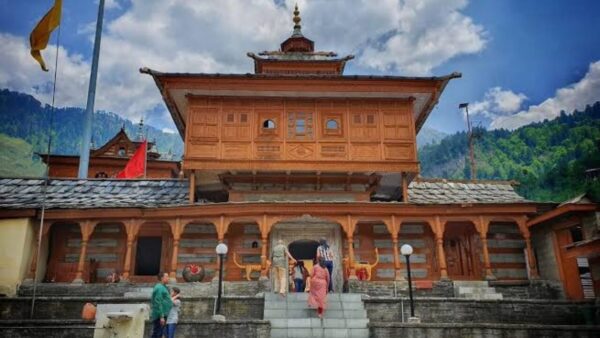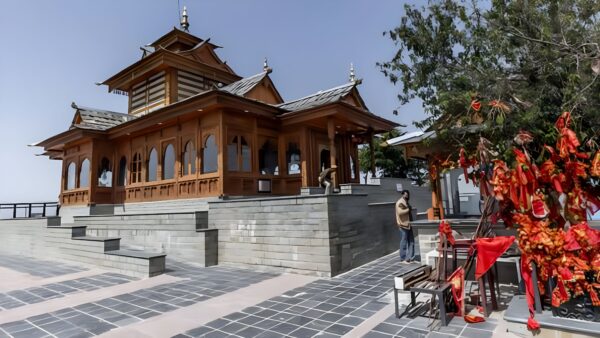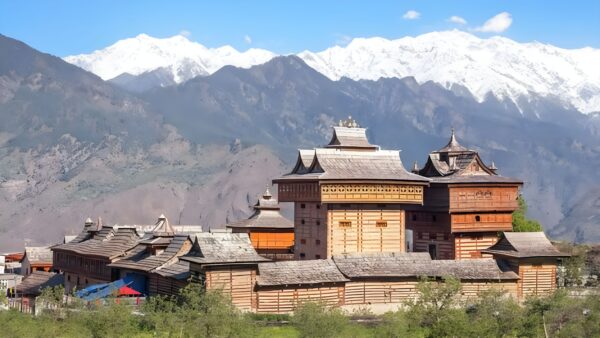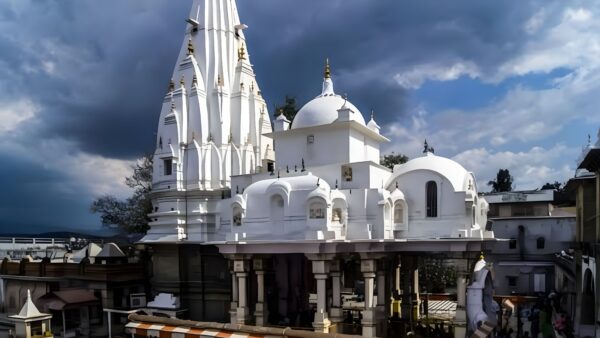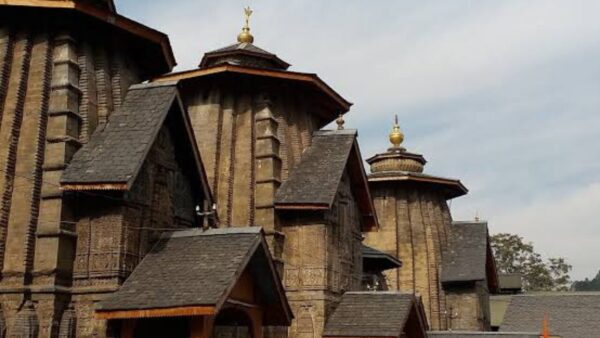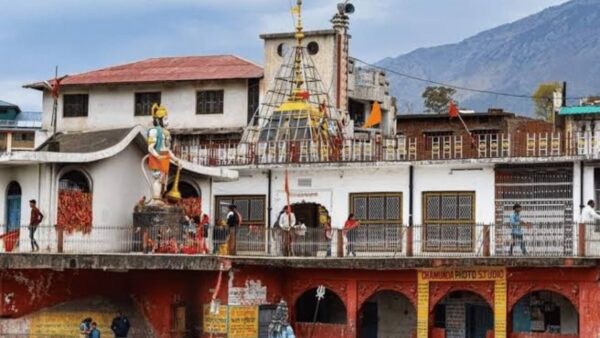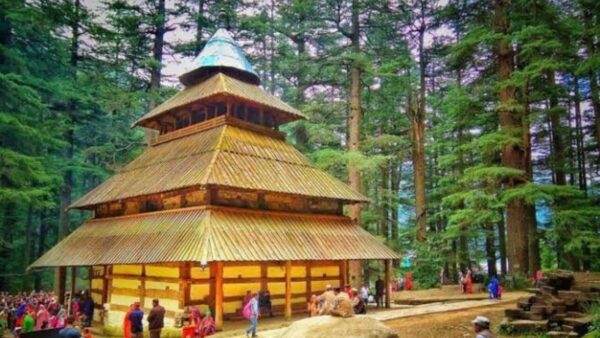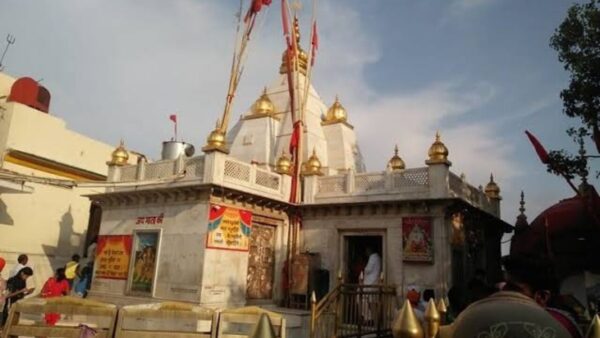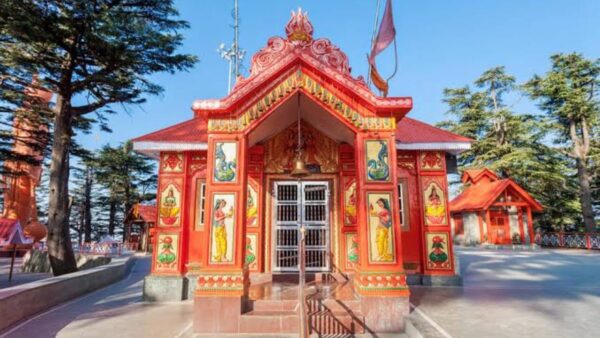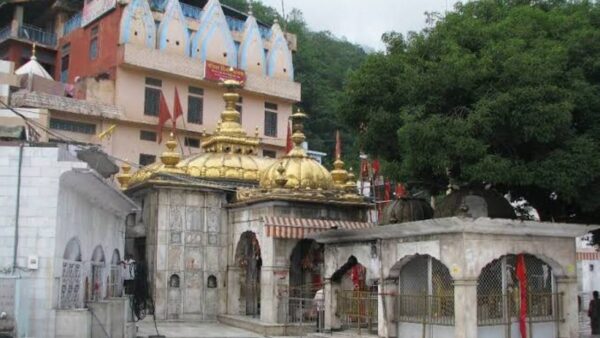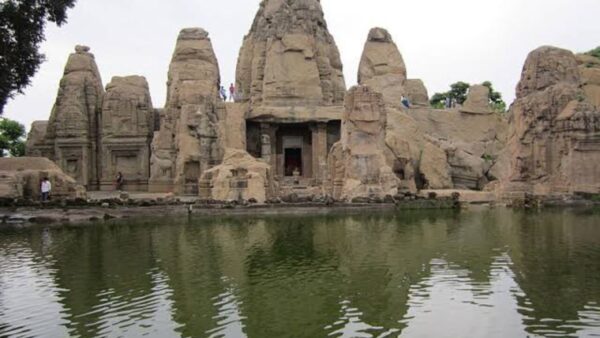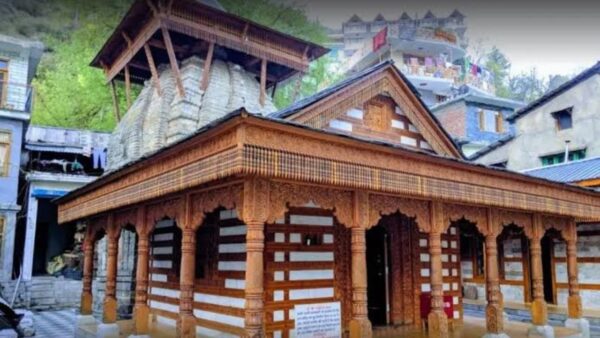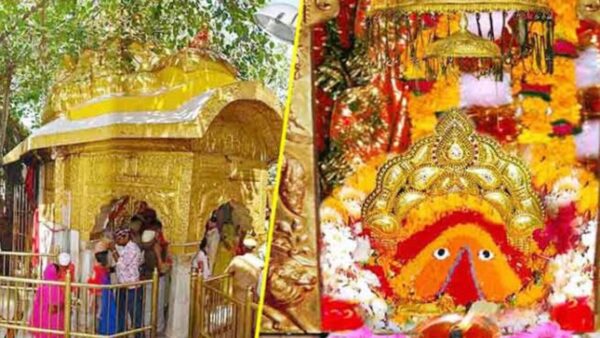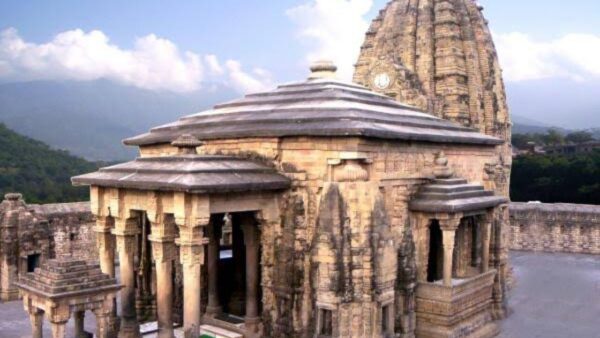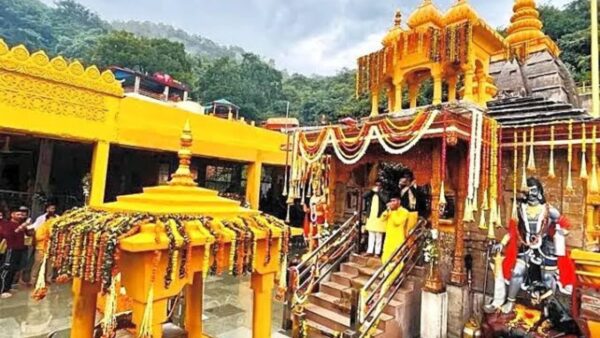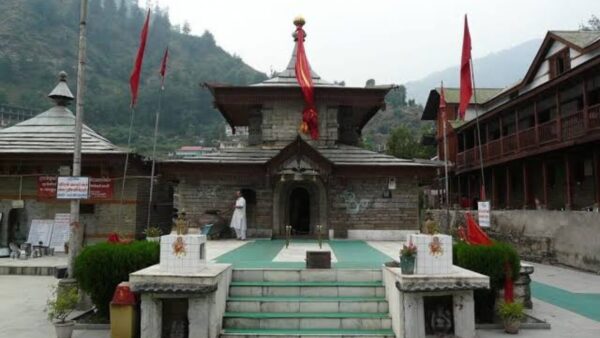Himachal Pradesh News
Unveiling the Divine: A Pilgrimage Through Himachal Pradesh’s 15 Ancient Temple Treasures
A Pilgrimage Through Himachal Pradesh’s 15 Ancient Temple Treasures : Himachal Pradesh, nestled in the majestic embrace of the Himalayas, transcends its reputation for breathtaking landscapes. It is a land steeped in spiritual traditions, where ancient temples stand as testaments to the region’s rich heritage. These architectural marvels are not merely places of worship; they are vibrant cultural centers that offer profound experiences for visitors of all faiths. Whether you seek spiritual solace, a deeper understanding of Hinduism, or simply an appreciation for exquisite architecture, Himachal Pradesh’s temples offer a unique and unforgettable pilgrimage.
This scholarly pilgrimage unveils 15 must-visit Himachal Pradesh’s 15 Ancient Temple, inviting you on a journey through time.
Tara Devi Temple, Shimla
Tara Devi Temple is dedicated to the powerful goddess Tara, a manifestation of Durga. This 18th-century temple complex is an architectural gem, showcasing a blend of artistic influences. The king Bhupendra Sen built the temple after he had a vision in which Goddess Tara Devi asked him to install a template there so that people could get her blessings. He also installed a wooden statue of Goddess there. Later, King Balbir Sen had a vision of Goddess Tara where she asked him to install the temple on Tarav hill top. The king did the same and also erected an idol of Goddess made up of “Ashtadhatu”, a mix of eight precious elements. During festivals like Dussehra and Durga Ashtami, a huge feast is arranged which is attended by a large number of devotees.
Bhima Kali Temple, Sarahan
The Bhimakali Temple in Sarahan is an 800-year-old shrine dedicated to Goddess Bhimakali, a fierce form of Goddess Durga. The present Bhimakali Temple was constructed in 1927, as the old temple tilted slightly during the 1905 earthquake, but astonishingly straightened back during a subsequent tremor. According to one legend, the Ear of Sati Devi fell here when Lord Vishnu cut the pieces of her body carried by Lord Shiva. Other legend states that this area was under the rule of a demon called Banasura, the great-grandson of king Prahlad an ardent devotee of Lord Vishnu. The legend goes that Lord Krishna fought here with him and the head of the defeated king Banasura was buried in front of the entry gate now marked as a raised platform to the first courtyard. After Banasura, Pradyumna, son of Lord Krishna ruled this area and constructed this temple recognizing Devi Bhimakali as the presiding deity of this area. The temple’s exquisite wooden architecture and intricate carvings are a visual delight for visitors.
Bajreshwari Devi Temple, Kangra
Situated in Kangra district, Bajreshwari Devi is a lesser-known but equally powerful Shakti Peeth. Dedicated to Goddess Vajreshwari, a form of Goddess Durga, the temple is an architectural marvel. According to the legend, the left breast of Sati fell at this spot, thus making it a Shakti Peetha. The original temple is said to have been built by the Pandavas at the time of Mahabharatha. Legend says that one day Pandavas saw Goddess Durga in their dream in which she told them that she is situated in the Nagarkot village and if they want themselves to be secured they should make a temple for her in that area, that same night they made a magnificent temple for her in the Nagarkot village. The serene ambiance of the place is perfect for meditation and spiritual rejuvenation.
Read Also : Analyzing Landslide Threats in Himachal Pradesh: A Geoscientific Approach
Lakshmi Narayan Temple, Chamba
Built in the 9th-10th centuries, by Raja Sahil Verman, Laxmi Narayana Temple is the main shrine in Chamba. The history says that the idol of Lord Vishnu in this temple was made of a rare marble, which was imported from Vindhyachal Mountains. It is believed that the former king of the region- Sahil Varman had sacrificed his eight sons to get the marble and finally his eldest son namely Yugkara succeeded to acquire the marble. Dedicated to Lord Vishnu and Lakshmi, the temple complex showcases intricate carvings and a serene atmosphere, perfect for appreciating the fusion of artistic and religious traditions.
Chamunda Devi Temple, Kangra
Perched atop a hill in Kangra district of Himachal Pradesh, Chamunda Devi is another powerful Shakti Peeth. This ancient temple dates back to the 16th century and is dedicated to Goddess Chamunda, a fierce form of Durga. As per the mythological legends, goddess Kali killed two notorious demons Chanda and Munda in a fierce battle at this place in ancient time, hence, the goddess is known and worshipped as Chamunda. The Goddess is believed to protect her devotees from evil forces and grant them courage. The temple complex not only holds religious significance but also offers valuable insights into the region’s artistic heritage and historical past.
Hidimba Devi Temple, Manali
Nestled amidst the serene cedar forest, the Hidimba Devi temple was built in 1553 CE by Maharaja Bahadur Singh. The temple is renowned for its captivating wooden architecture. The Hidimba Devi Temple has intricately carved wooden doors and a 24-meter-tall wooden “shikhar” or tower above the sanctuary. The temple base is made out of whitewashed, mud-covered stonework. An enormous rock occupies the inside of the temple, only a 7.5 cm (3 inch) tall brass image representing goddess Hidimba Devi. According to the epic Mahabharata, Hidimbi was supposed to have lived there with her brother Hidimb. Born into a Rakshasa family, Hidimba vowed to marry one who would defeat her brother Hidimb, who was supposed to be very brave and fearless. During the Pandava’s exile, when they visited Manali, Bhima, one of the five Pandavas defeated Hidimb and married Hidimba. When Bhima and his brothers returned from exile, Hidimbi did not accompany him, but stayed back and did tapasyā (meditation). The temple is built around a cave where Devi Hidimba performed meditation.
Read Also : Exploring Himachali Hospitality: A Guide to 10 best Homestays in Shimla
Naina Devi Temple, Bilaspur
Located in Bilaspur district, Naina Devi is another significant Shakti Peeth in Himachal Pradesh. According to a legend, it is believed that Shri Naina Devi Temple is the place where the eyes of Sati fell after Lord Vishnu unleashed his Chakra that cut Sati’s body into 51 pieces. The temple is situated on a hilltop, offering panoramic views of the surrounding landscape. Pilgrims come here to seek blessings for good eyesight and spiritual enlightenment. The temple’s picturesque location amidst the hills adds to the spiritual significance of the site.
Jakhu Temple, Shimla
Surrounded by panoramic views of Shimla and a profound sense of serenity, Jakhu Temple is an ancient temple in Shimla, Himachal Pradesh. Dedicated to the Hindu deity Lord Hanuman, it is situated at Jakhu Hill, Shimla’s highest peak and is a popular stop for pilgrims and nature enthusiasts alike. Installed in 2010, the 108 feet long idol of Hanuman is an attraction in itself. Illuminated with lights in the night, it is a grand sight to watch and is visible from most places in Shimla. According to one legend that surrounds Jakhu Temple, Lord Hanuman stopped at this spot to take some rest before resuming his search for the Sanjeevani Booti to revive Lord Lakshman.
Jwala Devi Temple, Kangra
Located in Kangra district of Himachal Pradesh, Jwalaji is one of the most revered Shakti Peethas in India. It is believed that the eternal flame here is a manifestation of Goddess Sati’s divine energy. Sati’s tongue is believed to have fallen at the very place where Jwala devi Temple is now situated. The Tongue of sati is represented by Holy Flame or Jwala that is perpetually burning. The temple complex houses nine natural gas flames, each considered a different form of the Goddess. This temple is also believed to be the first ever temple built by the Pandavas. Pilgrims flock here to witness this miraculous phenomenon and seek blessings. The eternal flames emanating from the natural rock formations within the temple create a mesmerizing and spiritually potent atmosphere.
Read Also : A Culinary Adventure: Explore Shimla 10 Best Restaurants And Cafe
Masroor Temples, Kangra
The Masroor Temples, also referred to as the Rock-cut Temples at Masroor, are a group of monolithic sandstone temples, carved around the 7th-8th centuries in the Kangra Valley of Himachal Pradesh. According to a local legend, the Pandavas resided here during their exile and built this temple, but because their identity and location was exposed, they shifted from here, which is said to be the reason of this unfinished temple complex. The temples face northeast, providing a serene view of the Dhauladhar range of the Himalayas. Their intricate sculptures and unique architectural style offers a window into the artistic sensibilities of ancient India as they are a version of North Indian Nagara style of architecture, dedicated to Shiva, Vishnu, Devi and Saura traditions of Hinduism.
Vashisht Temple, Manali
Vashisht Temple is dedicated to Sage Vashishtha and is located 3 km from Manali across the River Beas in Vashisht village. Famous for its sulphurous hot water springs with purported healing properties, the place is sanctified by three main temples dedicated to Lord Vashisht, Lord Shiva and Lord Rama built just next to the springs. The water from this spring is believed to have great healing powers, which can cure many skin diseases, infections and pains. This unique temple complex showcases a fascinating blend of Tibetan and North Indian architectural styles. This place has a refreshing atmosphere that allows one to indulge in exotic baths while seeking blessing from the presiding deity of the temple.
Chintpurni Devi Temple, Una
Situated in Una district of Himachal Pradesh, Chintpurni Temple is a popular pilgrimage site. The temple is dedicated to Goddess Chintpurni, one of the many manifestations of the Supreme Goddess Durga, who is believed to alleviate worries and grant peace of mind. It is believed that Sati’s head fell at this place and is thus considered one of the most important of the 51 Shakti Peethas. The goddess residing in Chintpurni is also known by the name of Chhinnamastika. According to Markandeya Purana, goddess Chandi defeated the demons after a fierce battle but two of her yogini emanations (Jaya and Vijaya) were still thirsty for more blood. Goddess Chandi cut off her own head to quench Jaya and Vijaya’s thirst for more blood. The intricate carvings and traditional rituals observed at the temple offer a glimpse into the vibrant local culture. Devotees from far and wide visit this holy shrine to seek solace and blessings.
Baijnath Temple (Kangra)
Baijnath Temple is a Nagara style Hindu temple situated in a small town of Baijnath located in Kangra District in Himachal Pradesh. Dating from the 9th-12th centuries, the Baijnath Temple is a masterpiece dedicated to Lord Shiva as Vaidyanath, ‘the Lord of physicians’. The temple is believed to have medicinal powers as the water emerging from the temple is believed to heal people from their illnesses. While the inner and outer walls of the temple boast exotic carvings and sculptures depicting incidents of Hindu mythology, the inner sanctum houses the holy shivling. Inscriptions found engraved on stone slabs in the main hall are written in Sanskrit using Sharada script and local Pahari language in Takri script and provide details about the construction of the temple by the merchants Manyuka and Ahuka. This magnificent temple is set in the backdrop of the Dhauladhar Himalayan Range which offers its visitors a tranquil experience.
Baglamukhi Temple, Kangra
The Baglamukhi Temple is located 30 km away from Kangra district in Himachal Pradesh and dedicated to Mata Baglamukhi, the Goddess of Wisdom and the 8th form of the 10 Mahavidyas. Goddess Baglamukhi is worshipped for power, victory, protection for cuts, scars, operations and accidents and dominance over enemies. The pujas performed at this temple are believed to be extremely powerful for victory in legal cases. The temple has a unique architecture as it features a distinct dome-shaped roof supported by pillars. The temple complex is painted in yellow color and contains intricate carvings and sculptures on the walls and pillars. The Prasad for devotees is also yellow colored (besan ladoo) as the colour yellow is believed to be the favorite colour of the Goddess. The temple complex offers a serene atmosphere conducive to meditation and reflection as it is surrounded by the magnificent Dhauladhar ranges of the Himalayas.
Hatkoti Temple, Shimla
The Hatkoti Temple is an abode of Goddess Mahishasurmardini locally known as Hateshwari Mata, an incarnation of Goddess Durga. The temple is located in the mysterious valley of Hatkoti, approximately 100 km from the state capital, Shimla. The main temple is solely dedicated to the Goddess Durga whereas the smaller temple right next to it worships the God Shiva. The statue of the goddess is 1.2 m in height and is made of Ashtadhatu (eight precious metals). The idol depicts the goddess with ten arms, riding a lion, carrying weapons and slaying the demon Mahishasura. Hatkoti temple dates back to the period between the 6th to 9th century CE. The architecture and design of Hatkoti Temple was originally in the classical Shikhara or tower style. The temple reflects the beautiful architecture of that era and offers breathtaking vistas of the surrounding hills, creating an awe-inspiring backdrop for spiritual experiences.
Conclusion
Himachal Pradesh’s ancient temples are more than just places of worship; they are living repositories of history, art, and spirituality. These hallowed structures, nestled amidst the Himalayan grandeur, offer a unique opportunity to delve into the heart of India’s cultural tapestry. Beyond their religious significance, these temples serve as invaluable resources for historians and archaeologists, providing tangible evidence of the region’s rich past.
The intricate carvings, architectural brilliance, and serene ambiance of these temples create an atmosphere conducive to contemplation and spiritual introspection. These ancient temples are not merely relics of the past but enduring beacons of faith and cultural heritage, inviting future generations to partake in their timeless allure. This curated list offers a starting point for exploring the vast spiritual landscape of Himachal Pradesh and helps to embark on a journey that transcends time, connecting with the wisdom and devotion of generations past.
Frequently Asked Question (FAQ) :
What makes Himachal Pradesh a hub for ancient temples?
Himachal Pradesh’s rich history, coupled with its geographical isolation, has preserved numerous ancient temples, making it a treasure trove for religious and historical exploration.
What is the architectural style prevalent in these temples?
The architectural style is predominantly a blend of Hindu and Buddhist influences, with unique regional variations. Many temples showcase intricate carvings and wooden architecture.
What is the significance of these temples in terms of religious beliefs?
These temples are considered sacred sites, embodying the spiritual essence of Hinduism. They are dedicated to various deities and are believed to be powerful centers of energy.
Which is the oldest temple in Himachal Pradesh?
Determining the exact oldest temple is challenging due to limited historical records, but many temples are believed to date back to the 8th and 9th centuries.
What is the best time to visit these temples?
The best time to visit is during the spring (March-May) or autumn (September-November) when the weather is pleasant.
Are there any specific rituals or customs to follow when visiting these temples?
While not mandatory, it is respectful to follow local customs and dress modestly. Removing shoes before entering the temple is a common practice.
Which temples are particularly famous for their architecture?
The Masroor Temples, Baijnath Temple, and Chamba Lakshmi Narayan Temple are renowned for their exquisite architecture and intricate carvings.
How can I reach these temples?
Most temples are accessible by road. Some remote temples might require trekking.
Are there any accommodation options near these temples?
Yes, there are various accommodation options ranging from budget guesthouses to luxury hotels near most temples.
What are some other attractions near these temples?
Himachal Pradesh offers a plethora of attractions, including natural beauty, adventure sports, and other historical sites.
Is it safe to travel to these remote areas?
Generally, it is safe to travel to Himachal Pradesh, but it’s advisable to check local advisories before planning your trip.
What is the cultural significance of these temples?
These temples are integral to the local culture and traditions, serving as centers for religious ceremonies, festivals, and community gatherings.
How have these temples withstood the test of time?
The temples have been preserved through a combination of local community efforts, government initiatives, and religious fervor.
Are there any ongoing restoration or preservation efforts?
Yes, there are ongoing efforts to preserve and restore these ancient temples to maintain their historical and cultural significance.
Can I volunteer or contribute to the preservation of these temples?
There might be opportunities to volunteer or contribute to the preservation efforts through various organizations working in the region.

